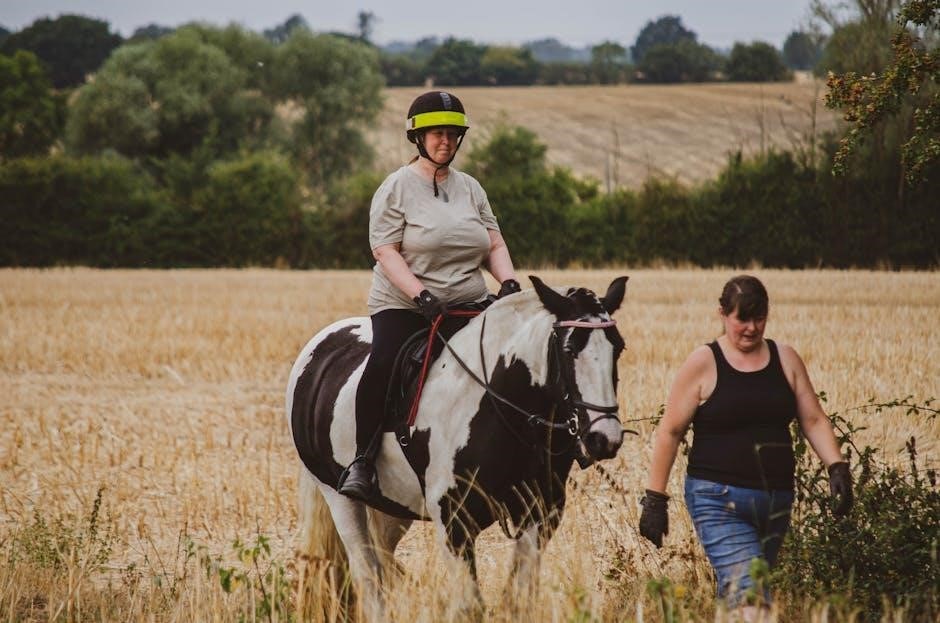The Field Guide to Evil is a horror anthology with eight stories, each directed by a different visionary, bringing unique fears to life with ultra-creepy and gore-soaked tales in a storybook format always.
Overview of the Horror Anthology
The Field Guide to Evil is a horror anthology that brings together eight unique stories, each with its own distinct vision and style. The anthology features a range of different directors, each with their own approach to horror, resulting in a diverse and eclectic collection of tales. From the creepy and disturbing to the weird and fantastical, the stories in the anthology are designed to evoke a range of emotions and reactions from the viewer. With its use of practical effects, stunning cinematography, and atmospheric sound design, the anthology is a must-see for fans of horror and the supernatural. The stories are woven together to create a sense of cohesion! and flow, making the anthology feel like a complete and satisfying whole. Overall, the Field Guide to Evil is a thrilling and unsettling horror anthology that is sure to leave viewers on the edge of their seats.
Comparison to Other Horror Anthologies
The Field Guide to Evil stands out from other horror anthologies due to its unique approach to storytelling and its global scope. Unlike other anthologies, which often feature stories from a single country or region, the Field Guide to Evil brings together directors and stories from around the world. This diversity of perspectives and styles gives the anthology a fresh and exciting feel, setting it apart from other horror anthologies. The anthology’s use of folklore and mythology from different cultures also adds to its distinctiveness, making it a fascinating watch for fans of horror and the supernatural. With its blend of traditional and modern horror elements, the Field Guide to Evil is a compelling addition to the horror anthology genre, offering something new and different for viewers to enjoy, and leaving a lasting impression on the horror community at large always.

Story Reviews
The Field Guide to Evil features eight unique stories, each with its own terrifying tale and eerie atmosphere always.
Die Trud/The Sinful Woman of Hollfells Review
Die Trud/The Sinful Woman of Hollfells is a standout story in the Field Guide to Evil, featuring a genuinely disturbing creature design that is both captivating and terrifying. The cinematography is incredible, with a unique and eerie atmosphere that draws the viewer in. The overall design of the story is well thought out, creating a sense of tension and fear that is hard to shake. The use of practical effects adds to the realism of the creature, making it even more believable and scary. The story is well paced, with a slow build up of tension that culminates in a shocking and disturbing climax. The attention to detail in the story is impressive, with a clear focus on creating a sense of unease and fear in the viewer. The result is a story that is both haunting and memorable, leaving a lasting impression on the viewer. The Field Guide to Evil is a must see for fans of horror, and Die Trud/The Sinful Woman of Hollfells is one of the highlights of the collection.
Review of Other Stories

Other stories in the Field Guide to Evil, such as Al Karisi, The Kindler and The Virgin, and What Ever Happened to Panagas the Pagan?, offer a unique blend of horror and suspense. Al Karisi has some nicely shot moments, although it can be predictable at times. The Kindler and The Virgin is beautifully shot, but feels too short and oddly edited. What Ever Happened to Panagas the Pagan? is a lighthearted and weird story with fun storytelling and practical effects. Beware the Melon Heads is a fun and cheesy story with great practical effects, while Palace of Horrors is a stunningly shot black and white short with a Lovecraftian feel. A Nocturnal Breath is a creepy and entertaining story that explores mankind’s darkest fears. The Cobblers Lot is a gruesome and beautiful depiction of a classic folktale, shot in the style of a 1920s-era German silent film. Each story offers something different and exciting.

Common Themes and Elements
Horror anthology explores darkest human fears with creepy atmosphere and practical effects always used.
Use of Practical Effects
The Field Guide to Evil utilizes practical effects to create a more realistic and terrifying experience for the viewer. The use of practical effects allows the filmmakers to create a more immersive and engaging atmosphere, drawing the viewer into the world of the story. This approach is evident in several of the segments, including Beware the Melon Heads and What Ever Happened to Panagas the Pagan?, which feature a range of creepy and disturbing practical effects. The use of practical effects also adds to the overall sense of unease and tension, making the viewer feel like they are part of the story. By using practical effects, the filmmakers are able to create a more believable and frightening experience, which is essential for a horror anthology like The Field Guide to Evil. The practical effects are a key element in making the stories come alive and are a major factor in the success of the film.
Atmosphere and Cinematography
The Field Guide to Evil features a range of atmospheric and cinematic techniques to create a sense of unease and tension. The cinematography is stunning, with each segment featuring a unique and unsettling visual style. The use of lighting, camera angles, and composition all contribute to a sense of unease and fear. The black and white segment, Palace of Horrors, is particularly notable for its beautiful and eerie cinematography, which adds to the overall sense of dread and unease. The atmosphere is also enhanced by the use of sound design and music, which creates a sense of tension and foreboding. The combination of atmosphere and cinematography makes The Field Guide to Evil a visually stunning and unsettling film, with each segment featuring a unique and terrifying visual style that draws the viewer in and refuses to let go, creating a lasting impression. The film’s use of atmosphere and cinematography is a key element in its success.
The Field Guide to Evil concludes as a terrifying horror anthology with eerie stories and cinematography always.
Final Thoughts on the Field Guide to Evil
The Field Guide to Evil is a unique horror anthology that brings together eight different stories, each with its own brand of fear and terror. With a range of styles and themes, the anthology offers something for every horror fan. The use of practical effects and cinematography adds to the overall atmosphere of the film, making it a must-see for those who enjoy the genre. The stories are well-crafted and engaging, with each one offering a fresh perspective on the horror genre. Overall, the Field Guide to Evil is a great addition to the world of horror anthologies, and is sure to leave viewers on the edge of their seats. The film’s ability to balance different styles and themes is a testament to the skill of the directors and writers involved. The result is a compelling and terrifying film that will appeal to a wide range of audiences.

Recommendation
The Field Guide to Evil is a must-see for horror fans, offering a diverse range of stories and styles. With its unique blend of fear and terror, the film is sure to appeal to a wide range of audiences. The use of practical effects and cinematography adds to the overall atmosphere of the film, making it a great choice for those who enjoy the genre. The stories are well-crafted and engaging, with each one offering a fresh perspective on the horror genre. The film’s ability to balance different styles and themes is a testament to the skill of the directors and writers involved. Overall, the Field Guide to Evil is a great addition to the world of horror anthologies and is highly recommended for fans of the genre. The film’s ultra-creepy and gore-soaked tales make it a compelling watch, and its storybook format adds to its charm and appeal.
